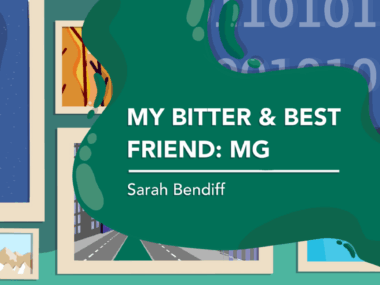Life with an invisible illness can still be fun
How I find joy and humor on difficult days with MG
Written by |

I’m not the first guy to discover that myasthenia gravis (MG) deserves membership in the select group known as invisible illnesses. Lately, I’ve been thinking about the impact that life with such an illness has on a person’s emotional health. I don’t want to end up in a dismal spot. Instead, I want to share the joy and humor I find in days made difficult by MG.
As a Harvard Health Publishing article notes, “Beyond physical challenges, people with invisible illnesses also shoulder unique emotional baggage. Every day brings weighty decisions about whether or when to disclose their condition and how to deal with possibly mixed reactions. People can’t see your suffering, so they may not understand or help you. They might not even believe you.”
In other words, part of you is invisible. It happens to be an important part. Let me share a story.
Ten years ago, I attended an instructional leadership team meeting at the high school where I taught. Our principal asked each team member to think about why, after many years in the classroom, they remained teachers. Why hadn’t they taken administrative positions, or left the profession? We could give only one reason. It required some thought and a process of elimination.
When we shared answers, commonalities appeared. Some folks felt teaching was a higher calling. They took pride in molding the world’s future leaders. Others found coaching athletes very rewarding. As I listened to my colleagues, I began to feel immature and silly.
I said the reason I loved teaching, and never wanted to do anything else, was because it was so darn much fun. I knew that at some point every day, something would be said or done that would bring down the house. Humor was never far from any moment.
Sharing our invisible side
One Halloween, a male student of mine arrived in class dressed in beige tights; a long-sleeve, beige fishing shirt; and pillows around his waist that he’d formed into the shape of a pumpkin. As the day progressed, pockets of laughter could be heard as teachers and students glimpsed the captain of the football team, dressed in all his pumpkin glory. The biggest of all the big men on campus was a totally different guy.
I want those who live with MG to consider my student. His costume made others laugh. It also was a statement that even the captain of the football team had a side that was invisible. Later that week, I had a chat with the pumpkin. He told me it was his attempt, using humor, to get people to see his invisible side. He wanted us to look at him differently.
I suggest that all of us with MG are kindred spirits to my pumpkin student. To most of the world, we appear no different from any friend, relative, or co-worker. When fatigue lays us low, when talking is suddenly difficult, or when swallowing issues prevent us from dining in a favorite restaurant, the reason is invisible. Our bodies still look ready to take on an opposing team and bring home a championship.
To keep from becoming angry, I’ve developed some responses to common hurtful questions. I hope they draw attention to the hidden side of MG and get others to see beyond what is visible. Let me share one.
On a recent flight, I had trouble getting into my seat. An irritated passenger asked if I was “handicapped or something.”
“I am,” I said. “I have myasthenia gravis.” He looked very embarrassed and told me he was sorry.
I didn’t look disabled on that day, but I told him, “You should have seen me during my Quasimodo phase. It’s a wonder what doctors can do.”
I don’t think he understood what I was saying. After he sat down, I heard, “Hey, Siri, look up Quasimodo.”
Having the courage to dress as a pumpkin and show the world another, less visible side to us isn’t easy. But it can be fun. Go enjoy.
Note: Myasthenia Gravis News is strictly a news and information website about the disease. It does not provide medical advice, diagnosis, or treatment. This content is not intended to be a substitute for professional medical advice, diagnosis, or treatment. Always seek the advice of your physician or other qualified health provider with any questions you may have regarding a medical condition. Never disregard professional medical advice or delay in seeking it because of something you have read on this website. The opinions expressed in this column are not those of Myasthenia Gravis News or its parent company, Bionews, and are intended to spark discussion about issues pertaining to myasthenia gravis.







Leave a comment
Fill in the required fields to post. Your email address will not be published.